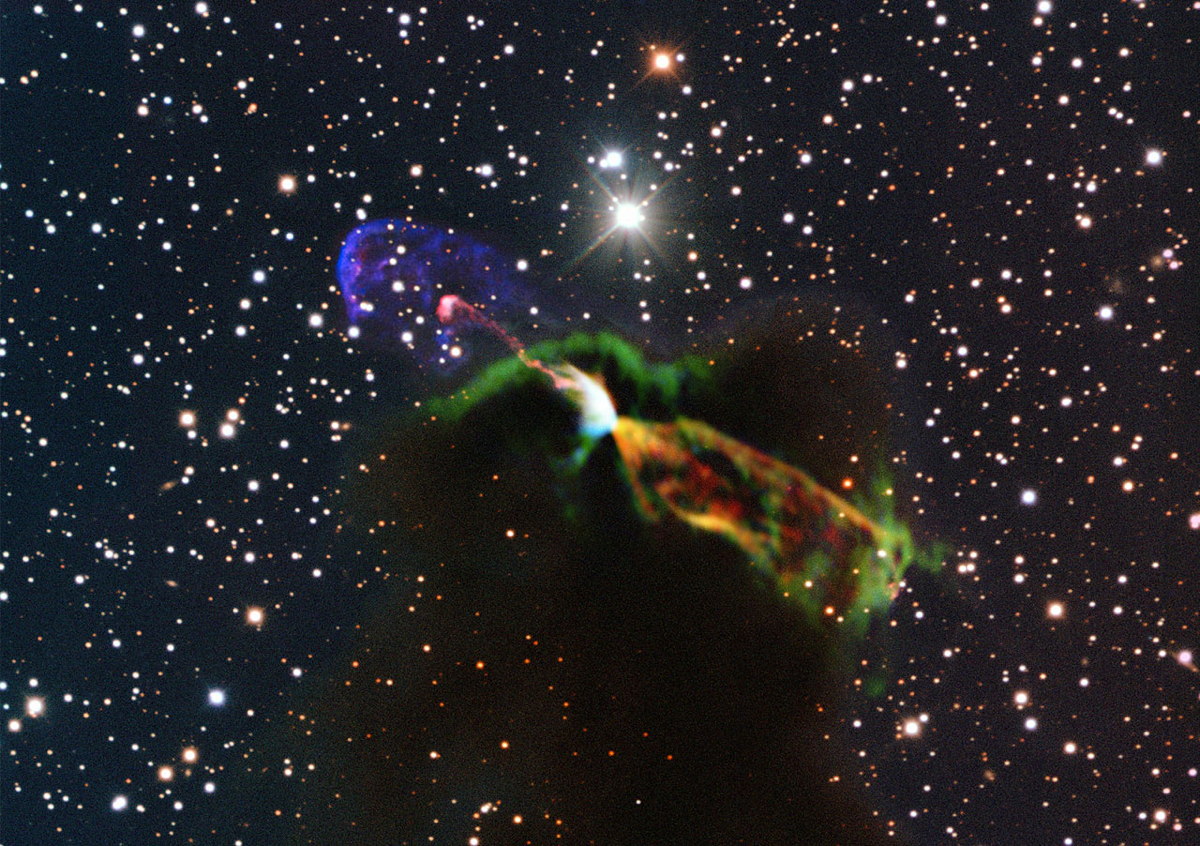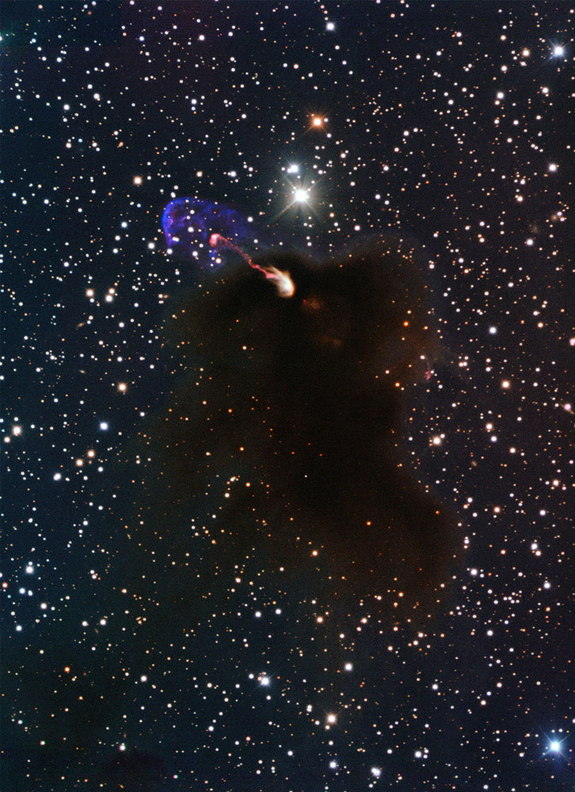Star Birth Drama Captured by Giant Radio Telescope (Photos)

A huge radio telescope in Chile has captured some dazzling views of a baby star lighting up an interstellar cloud about 1,400 light-years from Earth.
The ALMA radio telescope, a joint project between North America, Europe and Asia, recorded the star birth images. They show the nascent star unleashing material at hundreds of kilometers per second, which then slams into carbon monoxide molecules, causing them to glow. The glowing object spawned by the newborn star is what scientists call a Herbig-Haro object. European Southern Observatory officials used the new views to create a video tour of new star birth images.
"This system is similar to most isolated low mass stars during their formation and birth," Diego Mardones, a co-author of the study detailing the stellar findings said in a statement. "But it is also unusual because the outflow impacts the cloud directly on one side of the young star and escapes out of the cloud on the other. This makes it an excellent system for studying the impact of the stellar winds on the parent cloud from which the young star is formed." [See ALMA's photos of the baby star and Herbig-Haro object]
The new image of Herbig-Haro 46/47 (HH 46/47) produced by the ALMA telescope, its name is short for Atacama Large Millimeter/submillimeter Array, reveals two jets of material streaming away from the newborn star, one of which was never detected before.
One jet appears on the left side of the photo in pink and purple streaming partially toward Earth, while the orange and green jet on the right-hand-side show a jet pointed away from Earth.
ALMA's sensitive instrumentation took five hours to get these results. Earlier photos taken with other telescopes did not catch the second (orange and green) jet stream because dust surrounding the star obscured their views.
Astronomers observing the object with ALMA were also able to measure how quickly the glowing material is speeding through the cosmos, ESO officials said. The ejecta is moving at a much higher clip than previously measured, meaning that the outflowing gas has more energy and momentum than expected.
Get the world’s most fascinating discoveries delivered straight to your inbox.
"ALMA's exquisite sensitivity allows the detection of previously unseen features in this source, like this very fast outflow," Héctor Arce, the lead author of the study appearing in the Astrophysical Journal, said in a statement. "It also seems to be a textbook example of a simple model where the molecular outflow is generated by a wide-angle wind from the young star."
The $1.3 billion ALMA radio telescope is an array of 66 of individual radio telescopes that create one of the most powerful telescopes ever built. Each dish is up to 40 feet wide (12 meters) and can weigh 115 tons. The combined effort of the telescopes allows scientists to see celestial sights invisible in optical light because they are masked by gas and dust.
This story was provided by SPACE.com, a sister site to LiveScience. Follow Miriam Kramer @mirikramer and Google+. Follow us @Spacedotcom, Facebookand Google+. Original article on SPACE.com.





